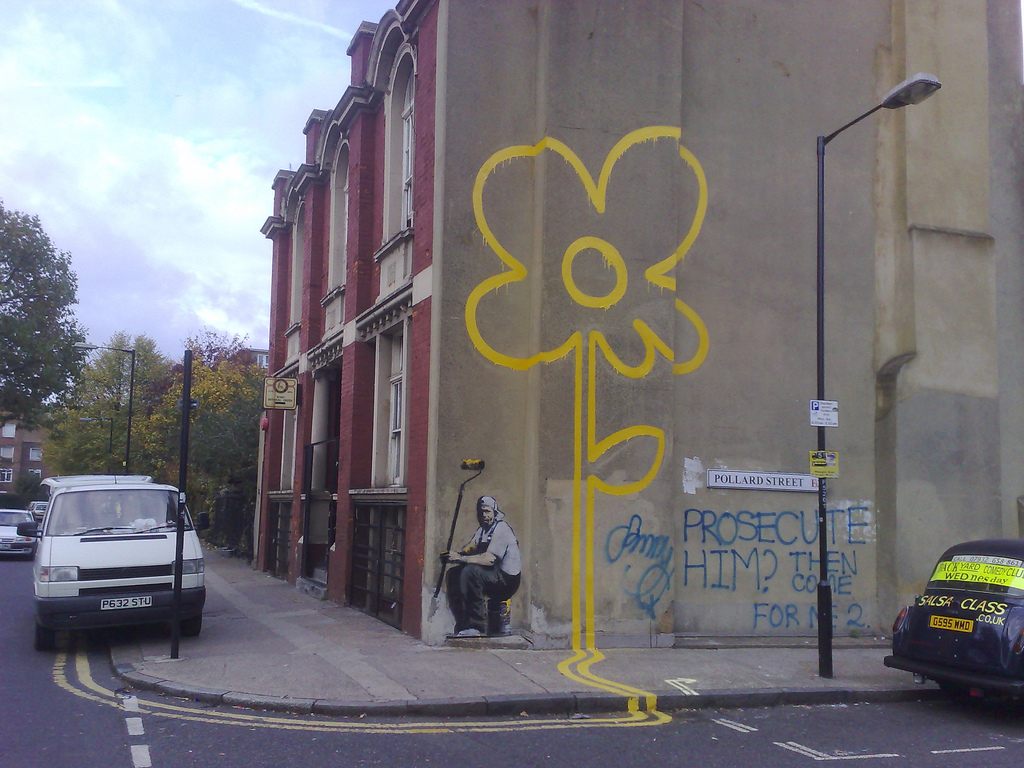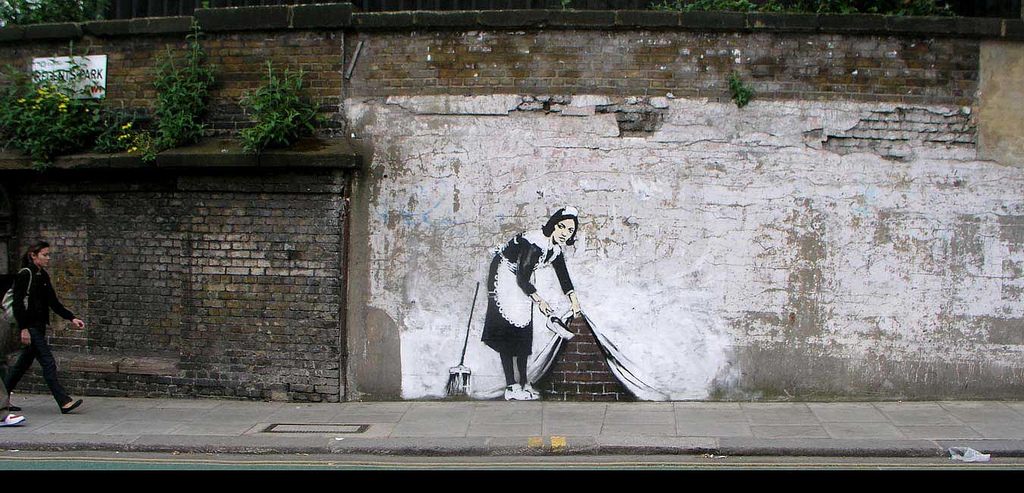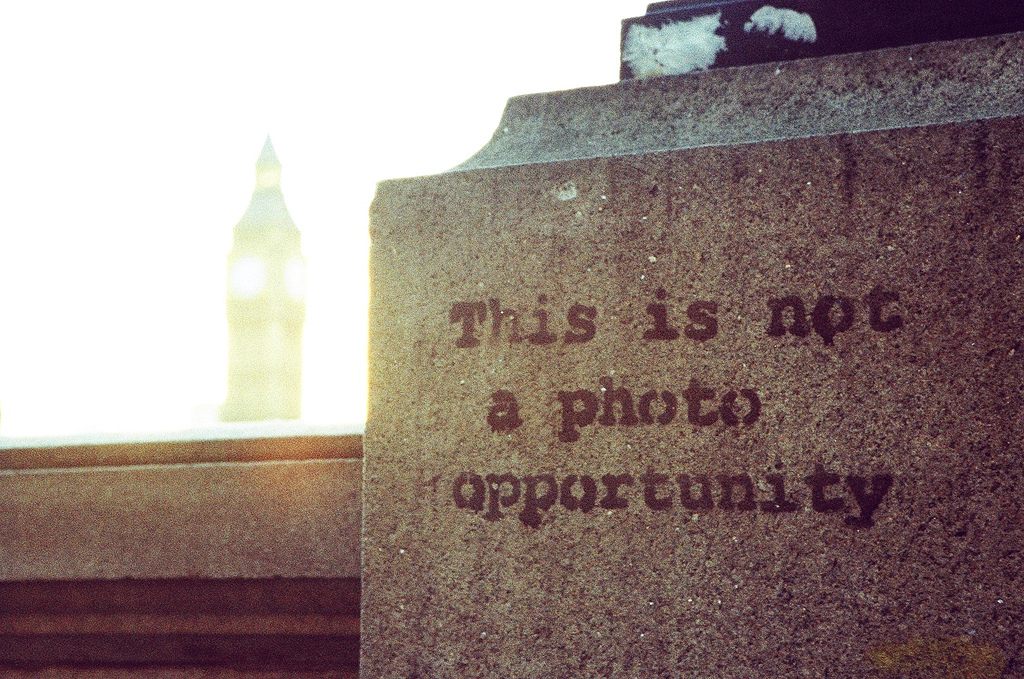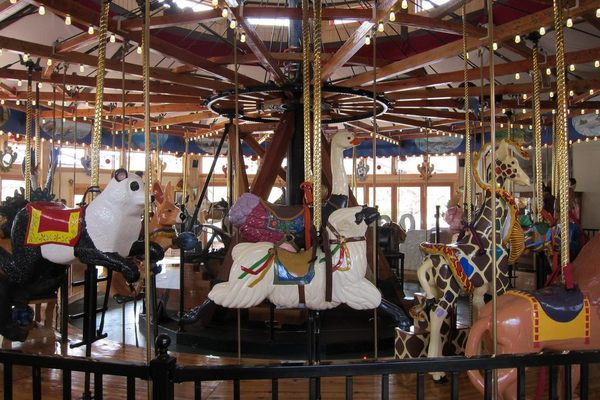Did Academics Unmask Banksy?
A new study used geographic profiling to finger the man suspected of being the artist.

Work attributed to Banksy on the streets of London. (Photo: Sean Jackson/CC BY-ND 2.0)
It’s a cliche seen in hundreds of crime movies: as investigators close in on the killer, they map out each slaying on a map with thumbtacks and yarn, connecting the dots until an inevitable visual revelation.
The stakes are lower in the art world, but researchers based in Britain tried to accomplish a similar feat in identifying the man or men who are Banksy, the prolific street artist who has managed to stay anonymous for decades.
The researchers, from the Queen Mary University of London, used a sophisticated form of geographic profiling to pin down addresses that could be associated with Banksy, based on the locations of 140 artworks attributed to him. Geographic profiling was first used by criminologists, but researchers have said that it could also be used in fields like epidemiology, to track the source of a disease outbreak.

Another presumed Banksy work. (Photo: Miquel C/CC BY 2.0)
A large number of loci are used in the model, which then finds clusters and later uses that information to identify places that suspects likely frequent, like their offices or homes.
In Banksy’s case, several addresses were eventually identified, including three in London, as well as a pub and residential address in Bristol. The man behind the addresses, researchers said, is someone whose name in the search for Banksy has come up before: Robin Gunningham, who was previously pinpointed as the primary suspect in 2008 after a long investigation by the Daily Mail.
“What I thought I would do is pull out the 10 most likely suspects, evaluate all of them and not name any,” an author of the study, Steven Le Comber, tells the BBC. “But it rapidly became apparent that there is only one serious suspect, and everyone knows who it is.”

Stencilled words spotted near Big Ben. (Photo: kris krüg/CC BY-SA 2.0)
Banksy has not commented on the study, but the artist is apparently aware of it: The study was set to appear in the Journal of Spatial Science last week, but lawyers for the artist contacted the journal and its publication was delayed. Their main issue? The wording of a press release that was later withdrawn, according to the BBC. The London researchers ultimately revealed their findings on Thursday.
While Banksy is generally assumed to be Gunningham, the mystery has persisted for years. The artist, who has said he does not like publicity, appeared in his own 2010 documentary Exit Through The Gift Shop with his face obscured and his voice altered.
“All the attention meant I lost some of the element of surprise,” he told The New Yorker over email in 2007. “A few days after the show in Los Angeles opened I was painting under a freeway downtown when a homeless guy ran over and said, ‘Hey—are you Binsky?’ I left the next day.”


























Follow us on Twitter to get the latest on the world's hidden wonders.
Like us on Facebook to get the latest on the world's hidden wonders.
Follow us on Twitter Like us on Facebook